History
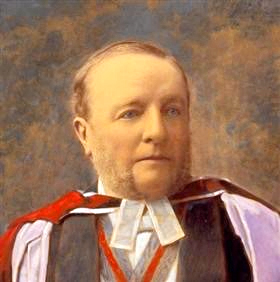
on the occasion of his knighthood in 1891
The System Garden was originally established in 1856 by Professor Frederick McCoy for use by botany students although it fell into disrepair in the early part of the 20th Century. The remaining area of the garden has been resurrected although the garden is now only a quarter of its original size due to building encroachment over the last 100 years.
It is now laid out according to Cronquists Classification, which groups related plants together. This system uses characters like flower structure to work out which plants belonged in each family. Within the System Garden there are representatives from all major land plant groups, including mosses, ferns, cycads, conifers and continuing on to all the angiosperms (flowering plants).
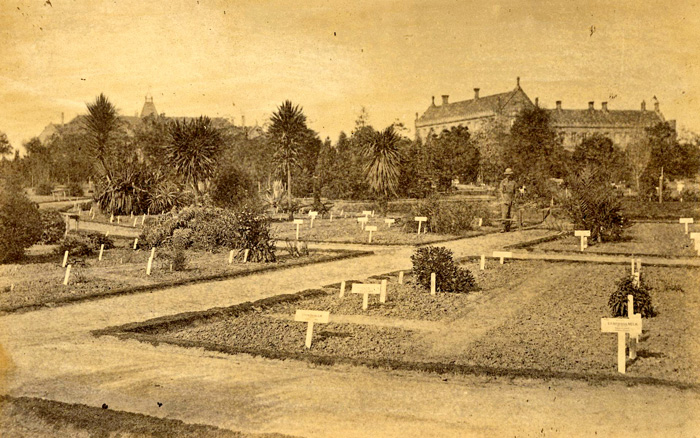
What is Significant?
The current System Garden, initially established as the Botanical Garden, is the remnant of a system garden originally created as a circular design contained within hedges in the north-west corner of the Melbourne University Campus.
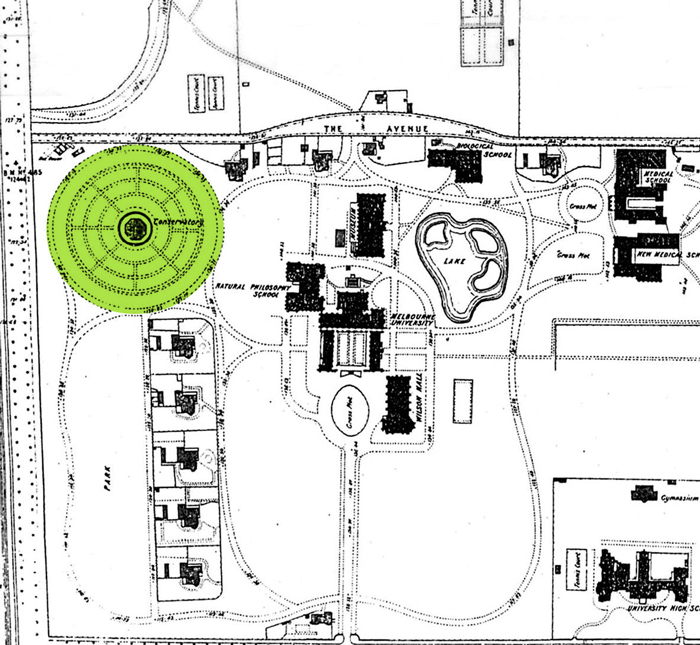
of the original Botanical Garden (System Garden) indicated.1
Edward La Trobe Bateman designed the garden as part of his 1856 plan to landscape the grounds. However, he was no doubt assisted in developing the scheme by Frederick McCoy, Professor of Natural Science; and William Hyndman, who in 1856 was appointed to the University from the Melbourne Botanic Gardens, where a similar garden had previously been prepared by Ferdinand von Mueller.
The origin of the circular form of the garden is not clear, though at its centre stood a polygonal glasshouse, closely reflecting the circular form of the garden. This appears to have been viewed as a feature of the System Garden from its initial inception, though today all that remains is the tower of the old conservatory, retained when the glasshouse was dismantled in 1916.
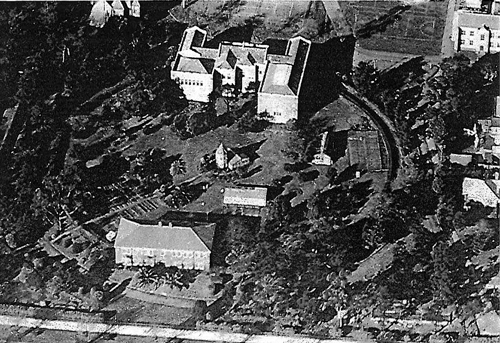
The garden has been subject to on-going change, mostly intrusions, which have increasingly disguised its original form and character. Firstly, the Agriculture Building was constructed on the west side of the garden and opened in 1923, as proposed by Professor A.J. Ewart, Professor of Botany. Botany, designed by the Public Works Department, was completed in 1929 and as Ewart suggested, was located opposite to Agriculture on the east side of the System Garden.
Further intrusion occurred following the Second World War, and included Babel or the New Arts Building (1946) - the first major non-biological use introduced into the garden; the Melbourne City Council Amenities Block (1950), the inaugural Forestry Building (1954), Glasshouses, Zoology and an extension to Botany.
Why is it Significant?
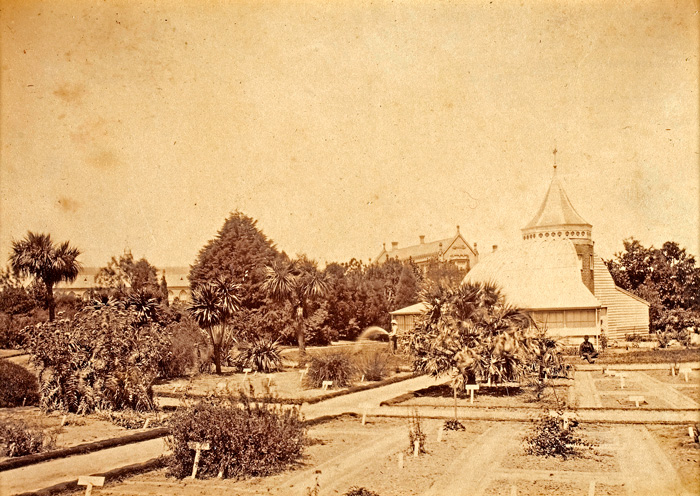
University of Melbourne Archives.
The System Garden is historically significant as a remnant of the original Edward La Trobe Bateman plan for the University. It has been subject to extensive change in its form, extent and purpose.
It contains vestiges of its original fabric, including the central tower of the conservatory and a number of plants including Palms (Phoenix canariensis, Phoenix dactylifera and Jubaea chilensis), a Cabbage Tree (Cordyline australis), and Osage Orange (Maclura pomifera) from very early plantings. These plants are possibly McCoy plantings, as they are located to fit into the McCoy system, and recorded in the original planting lists.
Scientifically, the System Garden is significant as a reflection of nineteenth century approaches to plant classification, this being according to natural orders as developed by John Lindley (1799-1865). As such, it reflects attempts by the University of Melbourne to develop facilities matching those in major British universities of the time; for example the implementation of the labeling system developed at the Cambridge University Botanic Garden.
How is it significant?
The System Garden is of scientific and historical significance to the University of Melbourne. The timeline below shows the gardens birth, decline, neglect and its rebirth in the 21st century.
- 1856
-
Concept for a Botanical Garden (System Garden) at the University conceived.
- 1859-61
-
Site work begins on the System Garden to design of Edward LaTrobe Bateman.
- 1866
-
Construction of central glass conservatory and brick tower begins.
- 1875
-
Completion of central conservatory.
- 1890s
-
Neglect of System Garden due to economic downturn.
- 1900s
-
Name changed from University Botanic Garden to the System Garden.
- 1916
-
Glass conservatory dismantled and new rectangular glasshouse attached to south-east façade of brick tower. System Garden grassed over.
- 1920s and 1930s
-
New buildings begin to encroach on System Garden.
- 1922
-
Completion of the School of Agriculture building in western part of System Garden.
- 1929
-
Completion of School of Botany building in eastern part of System Garden.
- 1947-49
-
Further encroachment following the completion of the Babel building (1947) in south-east of the System Garden and the southern addition to the School of Agriculture building (1949)
- 1954
-
Completion of the Forestry building in the north-east corner of the System Garden.
- 1961-62
-
Northern addition to School of Agriculture building.
- 1970
-
Master Plan creates a building envelope around the edge of the System Garden and keeps the centre of the garden free of development.
- 1981
-
1970 Master Plan building envelope configuration revised to permit the north end of the Zoology building to encroach into the southern portion of the System Garden.
- 1986
-
Eggleston Macdonald and Secomb architects design new Zoology building.
- 2001-02
-
Construction of Botany North Extension along northern edge of System Garden.
- 2019
Completion of new Western Edge Biosciences building on site of old Agriculture building, including System Garden Terrace on level two.
Visit the Botany Foundation: http://science.unimelb.edu.au/engage/giving-to-science/botany-foundation
1. George Tibbits, The Planning & Development of the University of Melbourne , 2000, p. 15
John Patrick Pty Ltd, Landscape Zone 1 – System Garden taken from University of Melbourne Heritage Documentation Part C Significant landscape Review , 2009